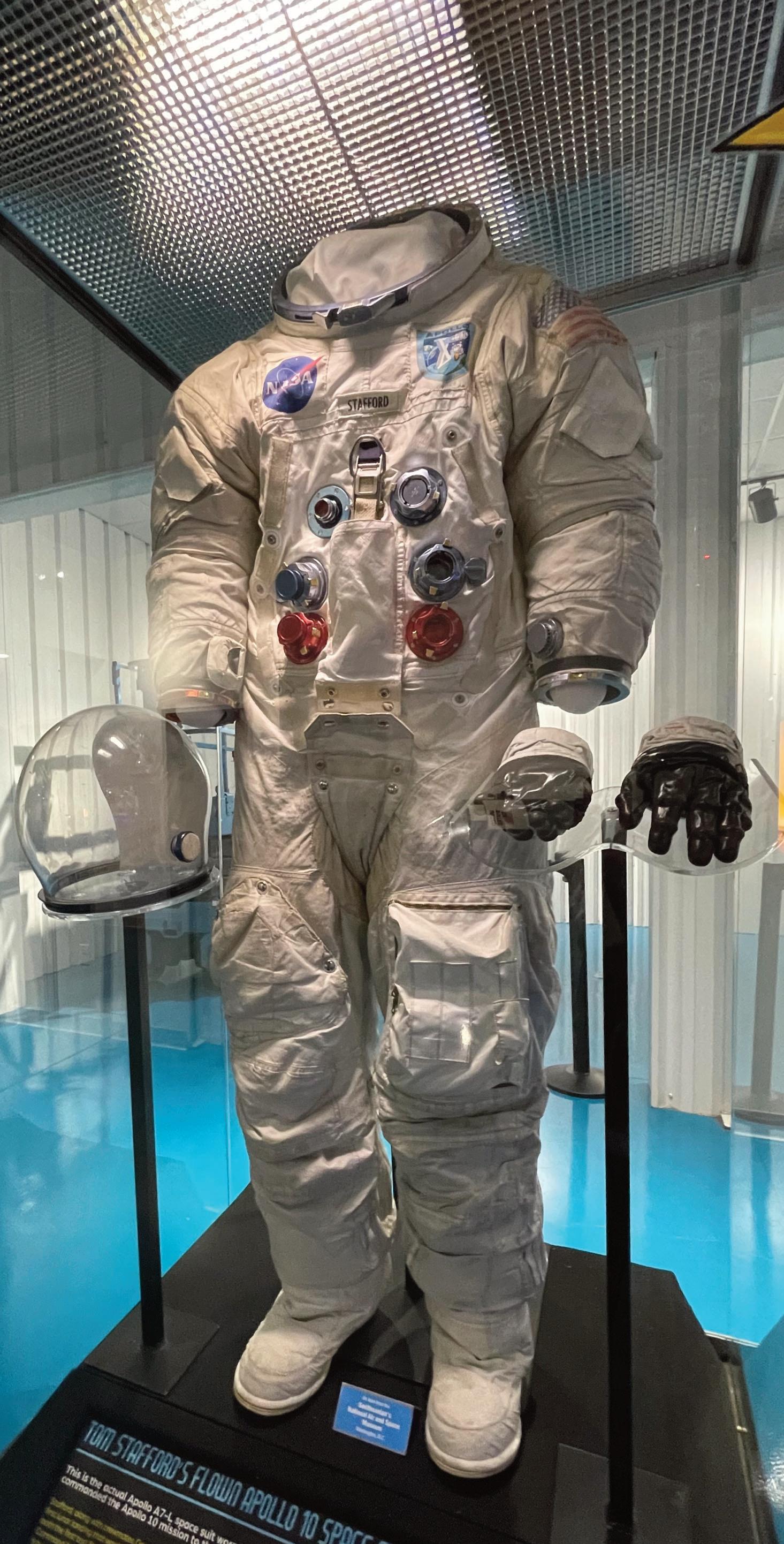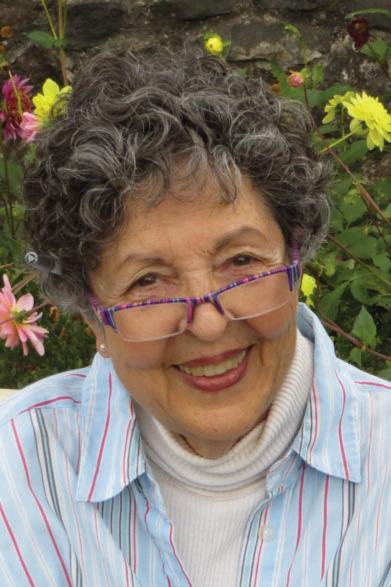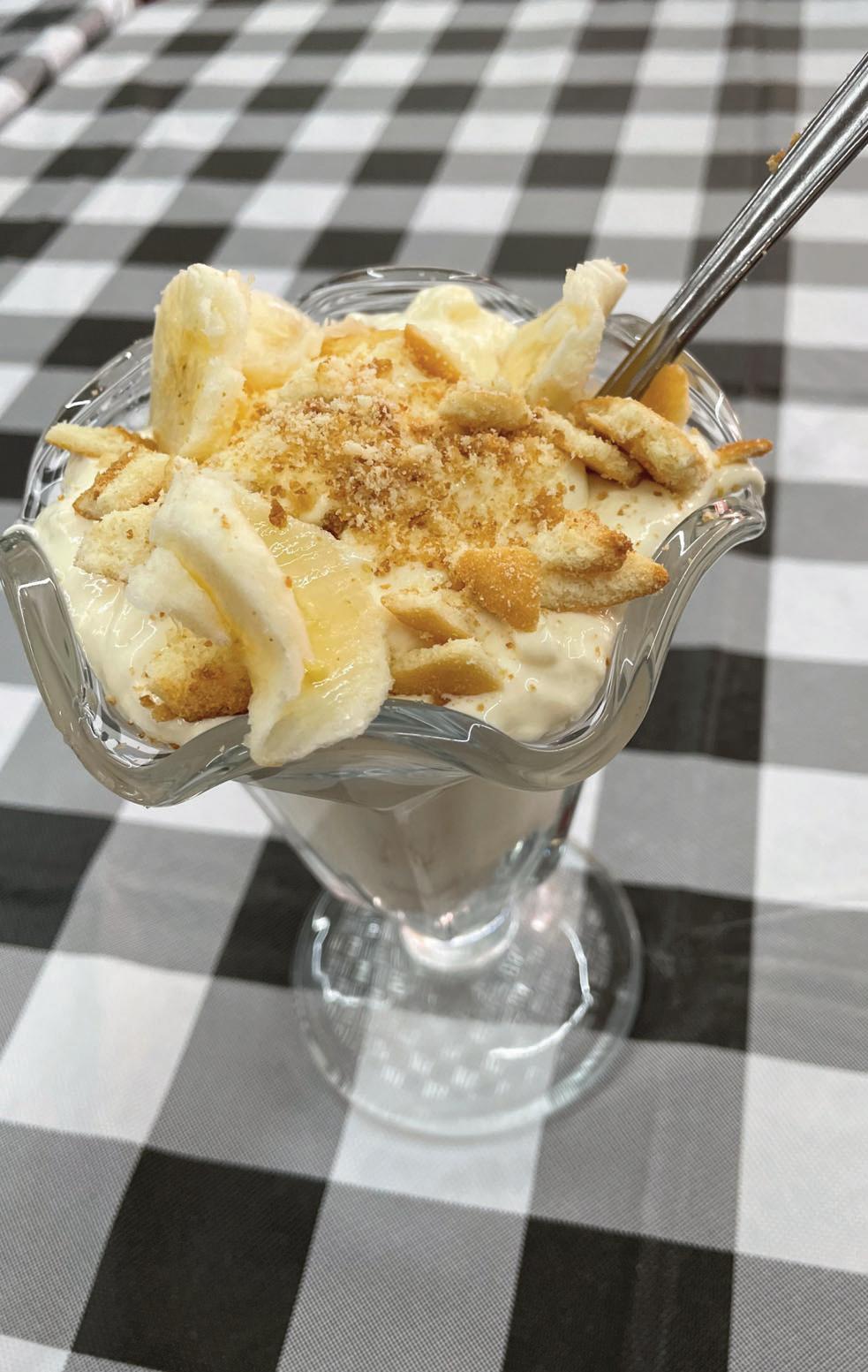
4 minute read
Oklahoma’s Stafford Museum is inspiring
By Elaine Warner

Oklahoma has produced some American legends but perhaps the most brilliant, most acclaimed Oklahoman came from a small, western Oklahoma town. While this larger-than-life figure no longer lives in the state, he hasn’t forgotten his home town – and the town certainly hasn’t forgotten him. To celebrate the man and his contributions to some of America’s greatest accomplishments, make a pilgrimage to the General Thomas P. Stafford Air and Space Museum in Weatherford.
What began as a small display case in the tiny Weatherford airport grew to two rooms in 1993 and has now exploded into a multi-galleried, 63,000 square foot, Smithsonian affiliate museum. The two original rooms are the Stafford Gallery and are dedicated to the incredible life, career and accomplishments of Tom Stafford. Toys, a grade card, a Boy Scout scarf and photos highlight Stafford’s youngest days while a Weatherford High School football jacket and other memorabilia come from his high school years. Graduating from Weatherford High School in 1948, he was offered a scholarship to the University of Oklahoma to play football but his acceptance to the U.S. Naval Academy took him in a very different direction.
Upon graduation, he joined the U.S. Air Force. Training and a number of missions followed. He was selected for test pilot training and became a test pilot, a test pilot instructor, and then co-authored training manuals on flight testing. Following that assignment, he applied and was accepted to Harvard’s Business School.
He barely got his foot in the door when he was notified that he had been accepted by NASA for its second group of astronauts.
In the second room of the Stafford Gallery, highlights from his career include a video called “Higher and Faster.” The title reflects the record set by Apollo 10 and Commander Stafford with crewmembers Gene Cernan and John Young. Upon reentry, the three traveled the highest speed ever experienced by a human – 24,791 miles per hour. Other exhibits include flight suits and awards along with highlights from his many other accomplishments
From there, visitors walk back into the past and a history of aviation. The first exhibit is a full-scale replica of the Wright Flyer. In 1903, the Wright plane was the first engine-powered, heavier-than-air vehicle to achieve flight. The replica is actually capable of flying.
This museum is full of educational graphics. The one about the Wright brothers and their achievement includes a child’s toy which inspired their thinking plus the engineering challenges they faced in creating the plane.
Other historic aircraft hang from the ceiling while a full-scale replica of “The Spirit of Saint Louis” on the ground gives visitors a peek at Lindbergh’s farfrom-fancy cockpit.
Don’t overlook a small display in an antique safe. Apollo 11 Commander Neil Armstrong had been able to obtain two small bits of the original Wright Flyer. These he took with him to the moon.
Wouldn’t the Wright brothers have been surprised!
The Gemini Gallery is the next area and leads into some of the museum’s coolest exhibits. While the purpose of the Mercury program (1961-1963) was to determine the ability of humans to survive in space, the Gemini program (1965-1966) pushed to test the goal of working and living in space.
Walking into this gallery, you can’t miss the giant Titan II rocket that stretches 100 feet across the entire north end of the building. Its unarmed nuclear warhead stands next to it. The Titan II was the rocket of choice for the Gemini program.
The focal point of this gallery is the actual Gemini 6A spacecraft flown by astronauts Stafford and Wally Schirra. In December, 1965, they performed the very first rendezvous with another spacecraft, the Gemini 7, a task that would be necessary for lunar exploration. The newest gallery, “Powering the Race to the Moon,” highlights the power of the Saturn V rocket which ultimately took men to the moon. You won’t find a Saturn V in here – this behemoth was taller than the Statue of Liberty, pedestal, foundation, and all! What they do have is an actual, test-fired, F-1 rocket engine. It took five of these engines to lift the rocket with the command, service and lunar modules on top, and nearly a million gallons of fuel.
Moving into the Apollo Gallery, a large sculpture of Snoopy welcomes guests. The Charles Schulz characters Snoopy and Charlie Brown, were the respective names that General Stafford chose to name the Apollo 10 lunar module (Snoopy) and command service module (Charlie Brown). Apollo 10 was the mission which scouted out sites for the planned Apollo 11 moon landing.
The premier exhibit in this gallery is the full-scale, high-fidelity replica of the lunar module and astronauts Armstrong and Aldrin. Nearby is a full-scale interactive lunar module simulator. The interactive features allow guests to choose one of the six lunar landings or launches, listen to actual communication between the astronauts and Mission Control, and see an astronaut’s view from the lunar module windows as they approach or ascend from the lunar surface.
The Modern Aviation Gallery is approached through a short tunnel created from the engine cowling of a Boeing 747. Here you’ll find the handson “Tweety Bird” cockpit and a collection of modern aircraft including an actual Russian MIG -21, an F-86, a T-38 and the sleek F-16 “Fighting Falcon,” partially developed by General Tom Stafford. This aircraft still serves as one of America’s front-line fighter aircraft.
Though still in development, the Stealth Gallery is impressive in size. It awaits its centerpiece F-117A Stealth fighter, expected to arrive early this year. The story of Stealth technology is even more impressive than the gallery.
In 1979, General Tom Stafford had an idea which he sketched onto a piece of Chicago hotel stationary. That design was the foundation for the Northrop B-2 Stealth Bomber, earning Stafford the soubriquet “Father of Stealth Technology.
The Stafford Museum’s F-117A acquisition is one of the most highly anticipated artifacts in the United States. This Oklahoma museum will be one of only seven with an actual F-117A on display.
A visit to the Stafford Museum is interesting, educational, and inspiring. Its namesake is truly one of America’s heroes.
Weatherford is approximately 90 miles from Norman, about an hour-and-a-half trip. If you’re there for lunch, stop at the Downtown Diner on Main Street. Be sure to save room for dessert.
They’re known for their New Orleans bread pudding with whiskey sauce. If they’re sold out (they were the day we were there), go for the banana pudding.
It’s a real treat.











